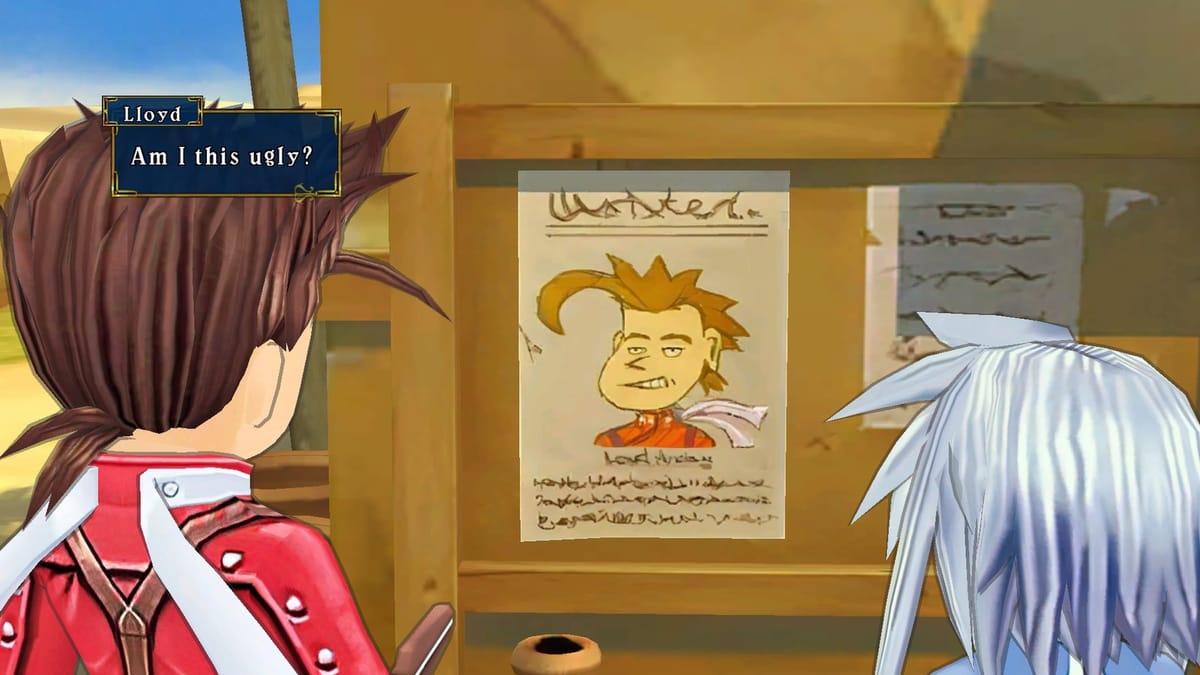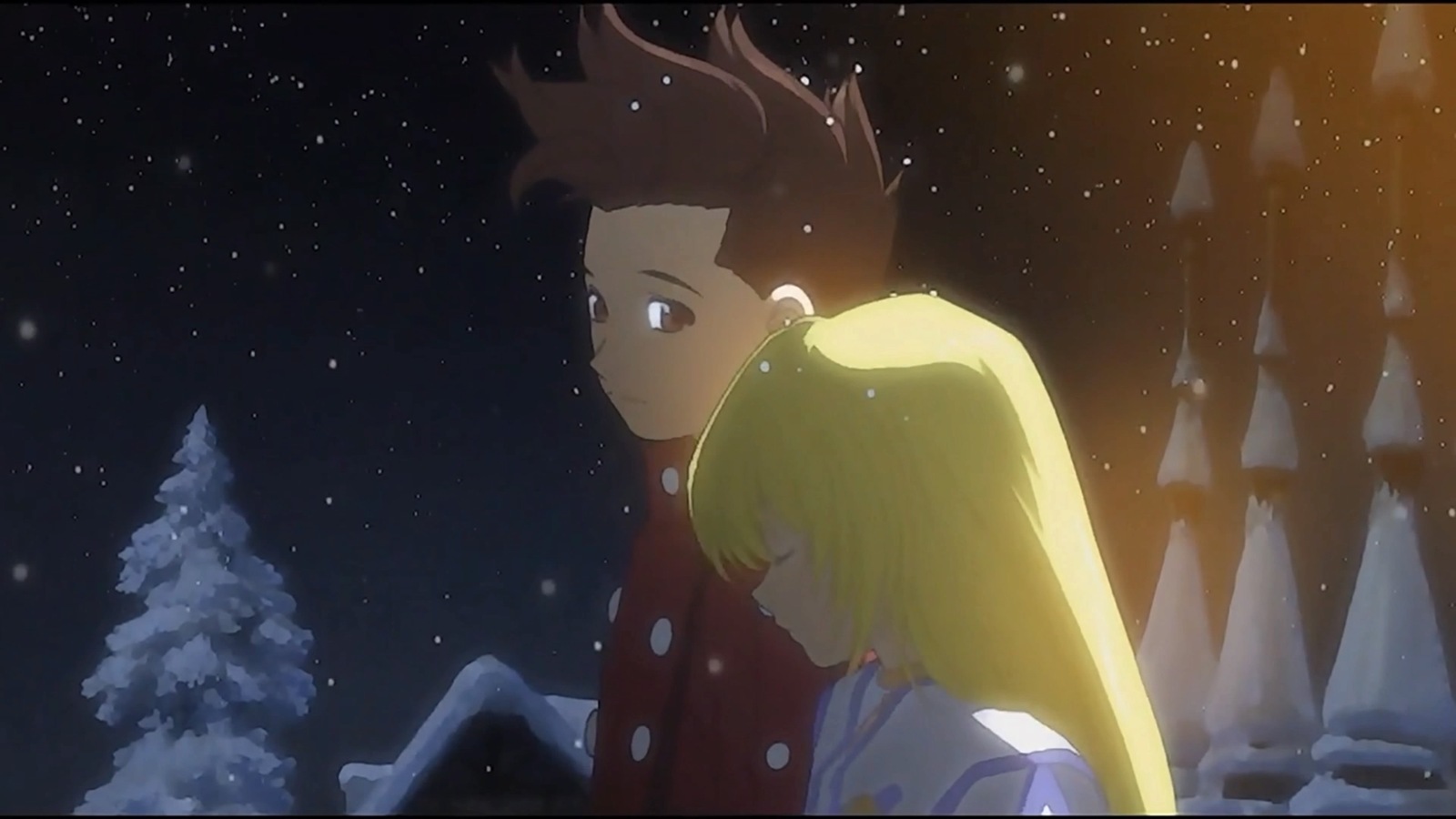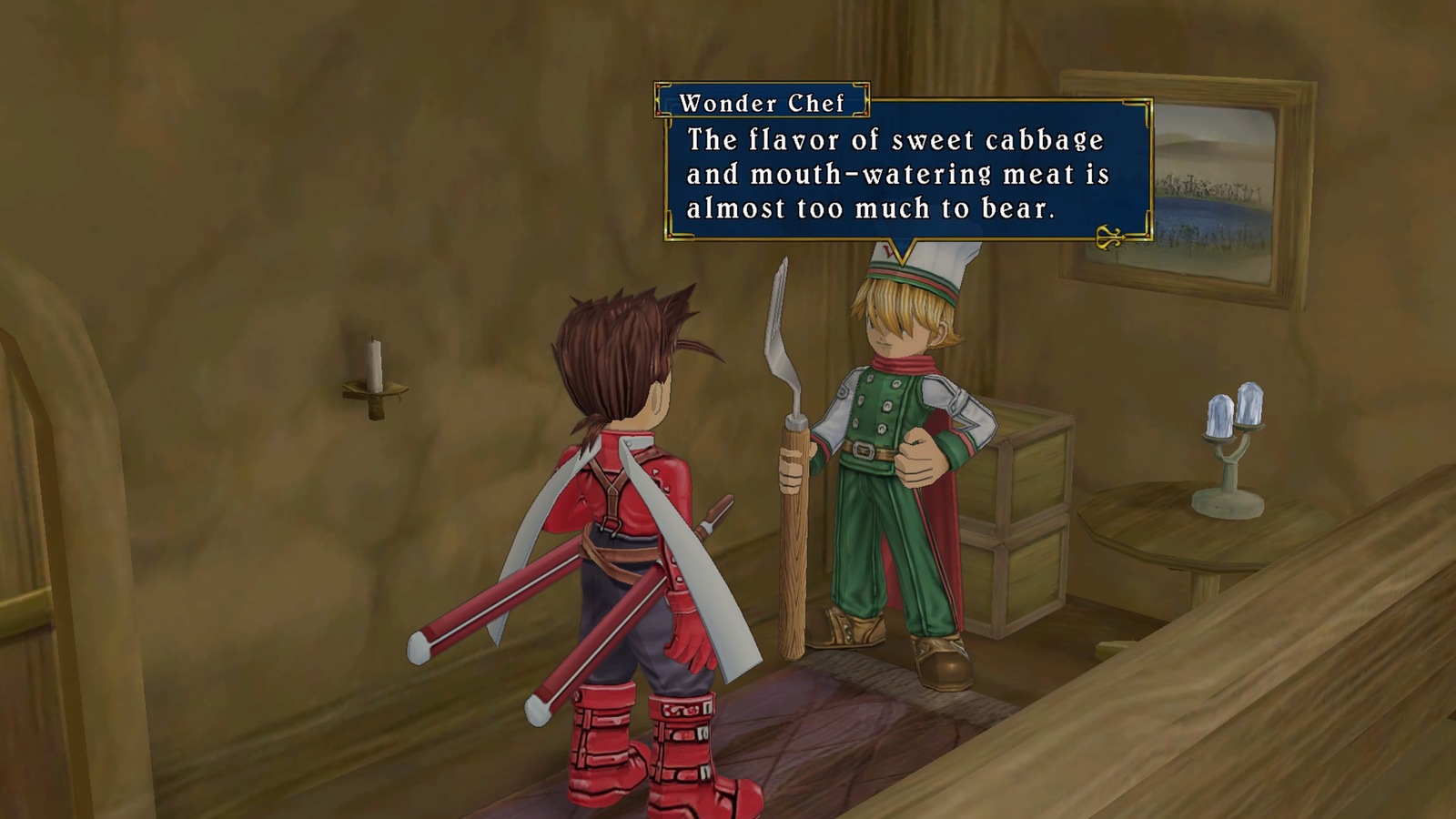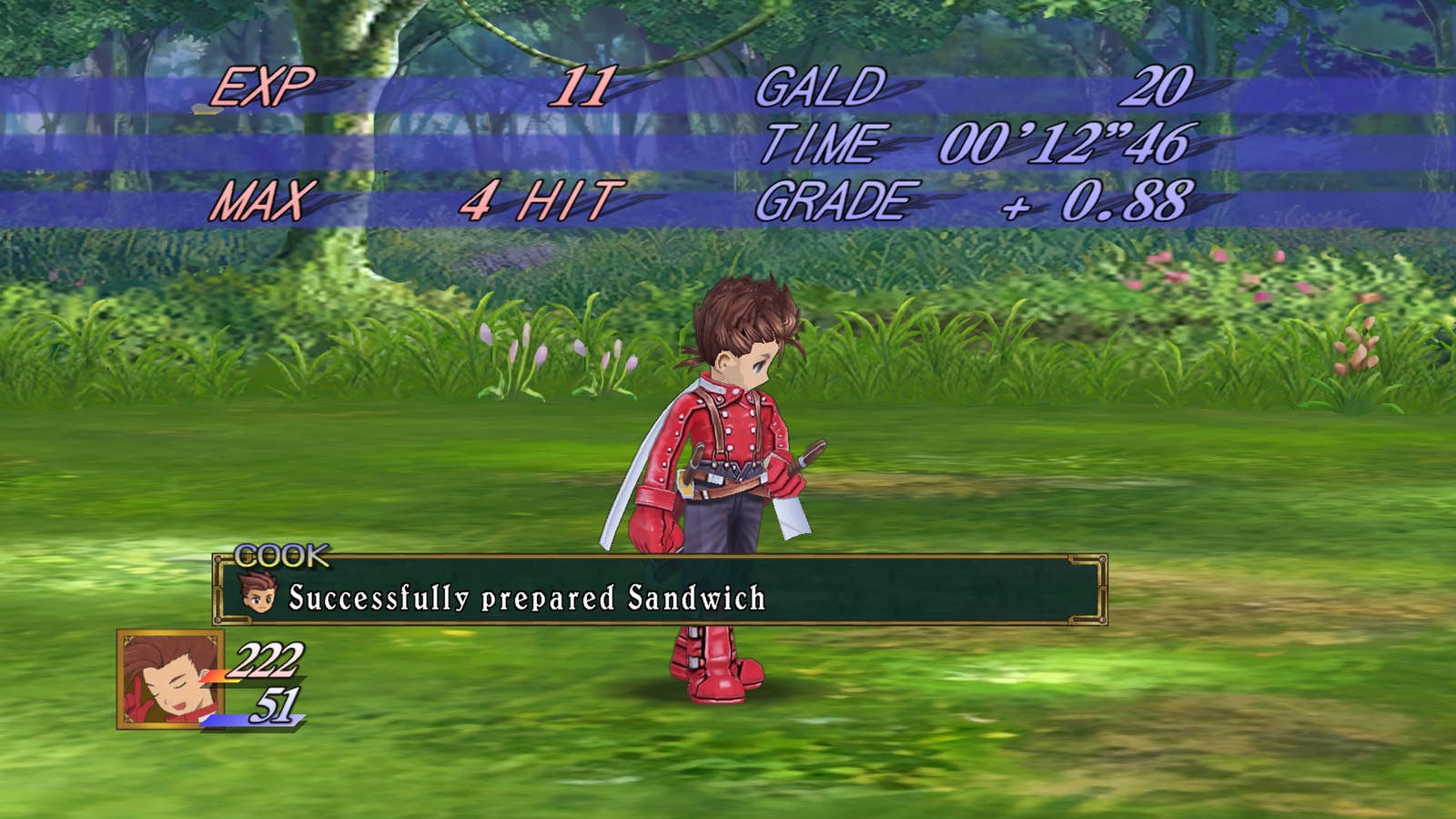
A lot of “re”-ing goes on in video games these days. From remakes to remasters to your favorite alternative form of reconditioning, it’s hard not to associate the “re”s with repetition or the sense you’ve done it all before. That’s what the “re” prefix means, after all. Sometimes, however, “re”s can be a force for change; they can take something you love and execute it in an exciting new way. Tales of Symphonia focuses on the concept of “regeneration.” While that term carries plot significance with it, it also summarizes a lot of the impact this game had on me specifically, particularly in regards to my view on RPGs.
Ironically, I’m talking about Symphonia now because it has once again been churned through the remaster machine. In a way, that’s perfect. The nature of regeneration versus recycling collide here, highlighting the important roles of both.
I describe Symphonia as a regenerative RPG because it took a lot of the things I loved about RPGs and instilled them with a new energy. By the time that I played Symphonia, I was very familiar with games like Final Fantasy and its contemporaries, particularly how their stories go and how the games are structured. Symphonia follows beats that virtually any RPG fan from the 90s will be familiar with. That’s not a bad thing. While the Tales series often takes criticism for its straightforward adherence to convention, that element forms an important part of their identity. What makes Tales games special is how they work within convention to connect you to that traditional kind of experience on a deeper level.
Symphonia remains one of the best examples of this concept because it strikes just the right balance between traditional RPG tenants and fresh ideas. It does this in many ways, but combat is the most prominent.
Tales games are known primarily for being “action RPGs,” but in the modern day, what constitutes an RPG has become pretty diluted. People throw all kinds of different games into the “action RPG” bucket. In reality the vast majority of “action RPGs” lean closer to pure action games that just happen to make numbers appear when you hit things.
A fine line exists between the RPG elements being there and actually changing how you play the game. In many action games, you only need to understand the base combat mechanics in order to find success. Turn-based RPGs by their nature fall more on the stats mattering end of the line. Since you lack direct control over the battle, you have no choice but to make decisions based on the numbers at play.
The combat in Symphonia effectively bridges the gap between turn-based RPG and action game. While you run whacking enemies often, whacking can’t be your sole concern. Tales games borrow elements from fighting games in that you can combine basic attacks with special attacks called Artes in order to maximize damage with combo attacks. Unlike most fighting games, however, your combo options are generally limited. Symphonia’s combat may come across as stiff as a result because your combos aren’t long and it’s easy for enemies to punish you in between the gaps of your attacks.
However, the gaps force you to strategize. This is a game where you’re meant to take damage, not unlike how the player and enemies take turns dealing blows in a turn-based RPG. You must balance your understanding of the action mechanics with the long term consequences of trying to deal damage. Blocking ends up being a surprisingly prominent mechanic because of this balance. Many enemies tempt you to relentlessly attack them, but if you fall for the bait they will quickly drain your HP and overwhelm you. Sometimes it’s better to play things safe and pick a moment where your party can best support you before going in for the kill.
Symphonia carefully balances its battles in a way that keeps them consistently engaging. On a basic level, they’re fun because it’s fun to hit things. They move at a quick pace and you often find yourself moving on from one battle to the next with little downtime. Despite the quick pace, the strategic considerations of how you build your party and rely on them hold your interest. It’s a very full experience.
A similarly satisfying experience lies in every other part of the RPG experience. Symphonia dwells on the details, which brings the world you explore to life. Every map you traverse may look simple at glance, but is densely filled with detail if you’re willing to engage with it. I’m not talking about visual detail per se, more that there are a staggering amount of things to discover if you’re willing to look for them. From treasure to parrots that are actually culinary chefs in disguise, the game constantly rewards you for going off the beaten path.
Perhaps the best way the game rewards you is through its characters. Symphonia tells a grand narrative that twists and turns into all kinds of dramatic directions, yet that was never what compelled me to keep playing. Instead, for Tales games, and especially Symphonia, the characters do most of the heavy lifting. They’re just fun to be around! The dialogue frequently highlights different character dynamics in a natural, almost effortless way. Unlike a lot of RPGs, you feel less like you’re collecting new tools for battle and more like you’re picking up friends to pal around with. Even the lulls between the events of the story don’t matter much when listening to the characters chat about nonsense.
Symphonia skillfully leverages the strength of its character writing by using it as an incentive to explore. Tons of optional dialogue hides in the nooks and crannies of the game. Tales games have “skits” that occasionally pop up on the screen depending on when and where you go to a location. These skits allow you to listen in on some of the conversations your characters have as they travel. These are easily the game’s most endearing inclusions. Few RPGs and even fewer stories take the time to indulge in the more mundane moments of character interaction, but it’s in these kinds of conversations that you really get to know people best. Oftentimes, exploring to find skits or other optional scenes are the best rewards the games have to offer.
Symphonia is a long game, yet with its unique approach to combat and dialogue it never feels like it. The game never lingers too long on one thing; it constantly keeps you moving to the next battle, the next skit, and the next area to explore. The only things that may truly slow you down are a particularly tough boss or puzzle.
In all of these ways, Symphonia regenerated the typical RPG conventions into a well-rounded and fulfilling experience. Every aspect of it felt fresh and compelled me to keep playing. Battles move at a quick and satisfying pace. How you build your team makes a noticeable difference in your strategy. The world is detailed and fun to explore. Traveling with the game’s rag-tag group of adventurers consistently spices up the situation. Even the puzzles prove to be genuine obstacles. Symphonia is the full package.
With the remaster, now Symphonia can regenerate RPGs for me once again, right? Unfortunately things don’t work that way. It may not even be desirable if they were to work that way. Remasters and remakes run rampant these days, but the goals of these releases can vary. Some re-releases change the source material so significantly that they may as well be a separate game entirely, Others aim to simply preserve the original experience. This latest remaster falls more towards the latter…with caveats.
On the Playstation 4 at least, I’d say that the developers did a thoroughly acceptable job. Not a thoroughly great job, but an acceptable one. This latest conversion translates the previous Playstation 3 port at a higher resolution and that’s about it. The big problem for me at least is that the PS3 version halved the game’s original frame rate of 60 frames per second, because it in turn was based on the Playstation 2 version that had already made that concession compared to the Gamecube original. Basically, this is a longstanding, glaring issue and it’s frankly a little shocking to me that it continues to haunt this new release.
Does the game running at 30 frames per second make this version of Symphonia unplayable? Not really – even with its fighting game-esque battles, this isn’t the kind of game that requires precise inputs or feedback. This issue ties more into the abstract, difficult to articulate feeling you get from interacting with a game that runs at a higher frame rate. Action games, really most games in general, feel better to play at 60 FPS, and I’d especially want that option when that’s how the game originally ran.
Between this and some other small issues with audio and presentation, I definitely wish they tried a little harder. While the developers could never perfectly recreate the regenerative effect Symphonia had on me, I would hope that they could at least re-release that experience in the best possible way so that someone new could have that experience.
Tales of Symphonia
Excellent
Symphonia regenerated the traditional RPG structure with smartly designed battle mechanics and well-fleshed out cast of characters. It remains a favorite of mine to this day and I’m glad to get the opportunity to experience it again, even if this re-release can never truly recapture the original effect it had on me. The remaster translates the regenerative nature of Symphonia competently, but this is the kind of game that deserves a remaster that goes the extra mile.
Pros
- Flashy and fun battle system
- Well-realized world that incentivizes to explore
- Endearing cast of characters
Cons
- Unremarkable remaster effort





